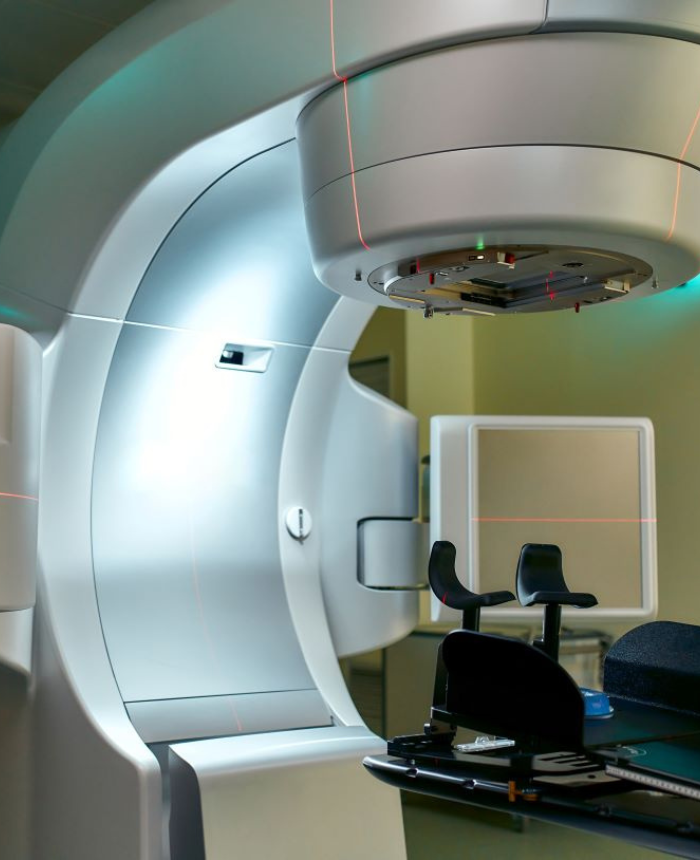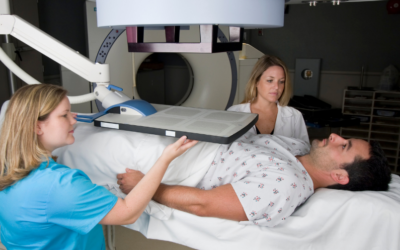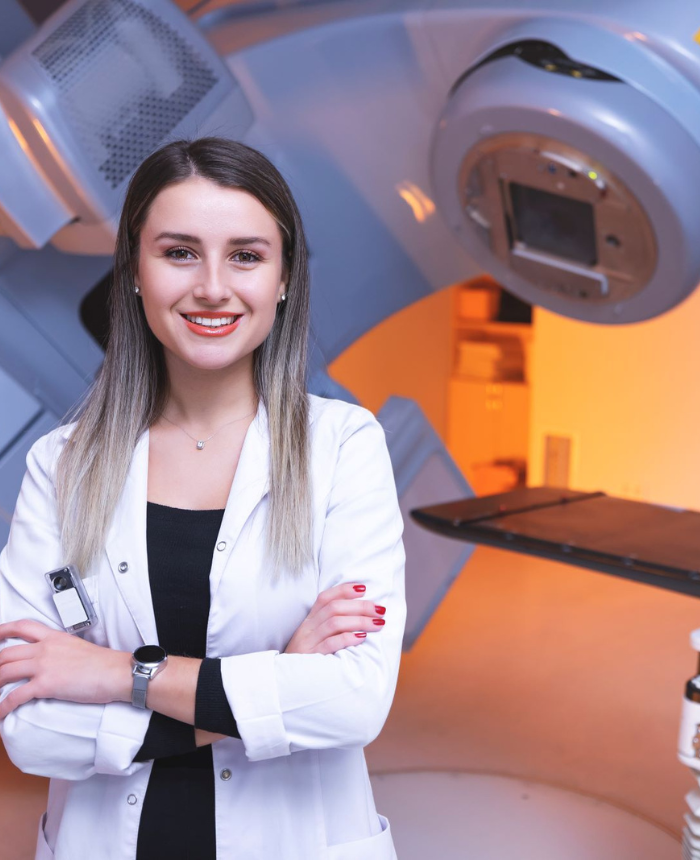
Treatment Technology
CT Simulation
In any radiation treatment, it is important to have a complete understanding of treatment area. This means that some of your earliest visits to a radiation oncology center will usually include a computed tomography, or CT, scan and simulation.
CT scanners are used to take cross-sectional images of the body, which can then be combined to construct a highly-accurate 3-D image of the treatment area. Through the use of CT scans, our treatment team will be able to clearly see where any organs, bones, tissues, or tumors are located. This allows us to pinpoint the exact location that needs treatment and create a treatment plan that specifically targets cancerous tissue while avoiding healthy tissue.
Our cancer center in Indiana uses a process called CT simulation to create a treatment plan for each patient, including the dose and targeting of radiation based on the tumor’s size, location, and shape. Each patient’s treatment plan is custom-made based on their scans.
CT Simulation Patient Resources
Here are some resources to help you better understand your treatment; how to prepare for treatment; and what to expect before, during, and after treatment occurs.
How Long Does a Radiation Treatment Take?
How long does a single radiation treatment will take? It depends. Here, we’ll provide some answers that we hope will help prepare you for your radiation therapy journey.
How Radiation Oncology Centers Treat Prostate Cancer
Prostate cancer can be treated by radiation oncology centers using external beam radiation therapy (EBRT) or internal radiation (brachytherapy). Learn more here.
How IMRT for Prostate Cancer Helps Prevent Cancer Spread
Using IMRT for prostate cancer treatment kills cancer cells and helps stop the spread of cancer—improving a patient’s overall prognosis.
FAQs
What is CT simulation vs. a CT scan?
While the terms CT scan and CT simulation are often used interchangeably, they are their own distinct technologies. CT scanners are the physical devices that take detailed images of structures inside the body, and CT scans are the resulting images. CT simulation is when our cancer center specialists use special treatment software to evaluate your scans and determine the specific location and shape of the tumor and treatment area. Functionally, the process of CT simulation includes CT scans.
When you come to our cancer center in Indiana, our team will determine the exact position your body will be in during each of your radiation treatments. Your oncology team will find a position that is easily reproducible and that works for you long term, including determining whether immobilization devices are necessary for comfort and stability.
In some cases, it may be necessary to mark your skin with a tiny marker so that you are perfectly realigned in the correct position for every session of radiation therapy. The need for a temporary or permanent marker will be discussed with you before the CT simulation.
Do I need to use a contrast agent?
While dense structures like bone are easily imaged on x-ray, soft tissues vary in how easily they are viewed with CT scans. Because of this, depending on the location of your tumor, the use of contrast agents may be needed. Contrast agents are substances that help block x-rays and make soft tissue easier to view. They may be given orally or injected into a vein. Contrast agents may have other side effects, so please let your oncology team know if you have abnormal kidney function.
Is there anything else I need to be careful of?
Metal objects like implants can create streaks or shadows on a CT scan that can obscure necessary details or affect the calculation of your radiation therapy plan. Make sure your cancer center staff know if you have metal implants such as rods, artificial joints, pacemakers, or plates.
Why use CT scanning for prostate cancer?
CT simulation is a common tool for prostate cancer because radiation must be aimed precisely at the treatment target each and every time treatment is given. It is especially important to be precise given the sensitive structures and organs in the prostate area.
Your Radiation Therapy Journey
Our team offers several radiation treatments for prostate cancer at both of our cancer centers. Click below to learn more about our cancer care technologies, see frequently asked questions about prostate cancer, discover resources and information to support you on your cancer journey, and find out what you can expect from treatment.
Technologies
Learn More about our cancer care technologies
We offer 3D-CRT, CT Scanning & Simulation, IGRT, IMRT, and Cone Beam CT.
Resources
Frequently Asked Questions
Have a question about prostate cancer? We've got answers.
Prostate Cancer Scans
At Integrated Cancer Care, we are committed to delivering the highest quality patient care to our prostate cancer patients.
If you or a loved one have recently been diagnosed with prostate cancer, you will likely have questions about treatment and what to expect. You may also want to know more about the diagnosis process.
Prostate cancer diagnosis and treatment usually incorporate various scans in order to find and effectively destroy cancerous cells, as well as monitoring for recurrence. The best scan for prostate cancer in your case will depend on your personal circumstances and what you and your doctor have agreed on, but there are some common approaches.
At Integrated Cancer Care, we offer the highest quality radiation therapy for prostate cancer through a comprehensive and multi-disciplinary approach designed to enhance clinical outcomes where possible. Integrated Cancer Care’s board-certified radiation oncologists, Dr. Tracy R. Price and Dr. Christopher Watson, provide on-site radiation oncology services for prostate cancer patients using proven technologies.
Schedule Your Appointment Today
If you are referred to radiation therapy during your cancer care, you get to choose where to receive treatment. We are here to support and encourage you—call us today to schedule your first appointment at our radiation oncology center nearest you.







